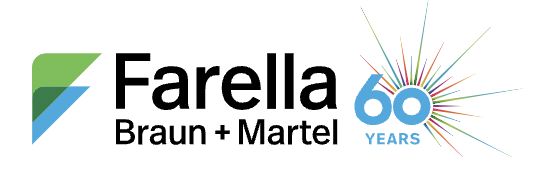Getting With The Program: How Opportunity Zone Investors Can Navigate Tax Benefits

Investing in the future of an economically distressed community can be rewarding in more ways than one. Not only are investors supporting the growth of an underserved community, but there can also be significant financial benefits as well.
One way to invest in these types of communities is through a Qualified Opportunity Fund, or QOF, which offers tax incentives to investors who put their money in specific underserved areas known as Qualified Opportunity Zones.
Before jumping into the process of obtaining a QOF, however, investors need to do their research to ensure they will receive the maximum tax benefits while fulfilling all of the obligations set by the Treasury Department.
Julie Treppa, tax partner at Farella Braun + Martel LLP, said that there has been investor interest in the Opportunity Zone Program since its inception in 2017.
“Initially there was little guidance regarding how to comply with the program, which made people reluctant to invest,” Treppa said. “In 2019, when the Treasury Department issued its final regulations laying out the requirements taxpayers must follow if they want to realize the intended tax benefits, more people were inclined to get on board.”
She said because the program provides additional tax benefits to those who held an investment in a QOF before Dec. 31, 2021, a lot of people came into the program at the end of last year.
“The Opportunity Zone Program is all about location and timing,” Treppa said. “Tax on the deferred gains invested in the QOF are deferred, not eliminated. If an investor invests in a Qualified Opportunity Fund within 180 days of realizing capital gains, they will not have to pay taxes on those gains until Dec. 31, 2026.”
She added that the tax benefits investors realize on these deferred capital gains may increase based on how long the QOF investment is held. For instance, if they hold their investment at least five years before Dec. 31, 2026, the amount of the deferred capital gain they need to pay tax on is reduced up to 10%. If the investment is held for seven years, the tax is potentially reduced another 5%.
Furthermore, she said, if the QOF investment is held for at least 10 years, the investor does not have to pay tax on any gain realized on this investment.
She said that before investors start their own fund or join an established one, they must be aware of Treasury’s rules and how they may vary depending on the structure of the investment.
“One rule dictates that 90% of the fund’s assets must be held in the form of Qualified Opportunity Zone property,” Treppa said. “Investments in a Qualified Opportunity Zone business qualify, but only if that business allocates a certain percentage of its properties and services for use within an opportunity zone."
She said that one thing investors may not realize is they can only have a small percentage of assets in the form of nonqualified financial assets and that they are barred from engaging in businesses such as tanning salons and country clubs.
“The nonqualified financial property test is particularly tricky because it often prohibits a business from forming subsidiaries other than those that are treated as disregarded entities,” Treppa said. “In this case, as tax attorneys, we aren’t able to use the typical structures that we often look at, and it can also be a trap for the unwary.”
Investors also have to be mindful of upcoming IRS deadlines. On its website, the IRS indicates a “QOF must hold at least 90% of its assets, measured on two annual testing dates, in qualified opportunity zone property, or pay a monthly penalty for every month it is out of compliance.”
Treppa said these check-in dates are typically on June 30 and Dec. 31.
As the IRS check-in dates get closer, she said, firms that do not have their own in-house capability to track this requirement should connect with an accounting firm or law firm with a tax specialty to be sure that they are compliant.
“The IRS is constantly working on developing those tax forms needed to show a QOF is in compliance with the program’s requirements,” Treppa said. “We work with the IRS to prepare comments for how they can get the information that they need across to ensure that people are compliant.”
Meanwhile, Treppa said, investors should review the current and proposed reporting requirements and be able to explain how their contribution to the program provides financial support for the communities they need.
“Investors should ensure that they are complying, not just with IRS rules and regulations, but also with the spirit of the program,” Treppa said.
This article was produced in collaboration between Studio B and Farella Braun + Martel LLP. Bisnow news staff was not involved in the production of this content.
Studio B is Bisnow’s in-house content and design studio. To learn more about how Studio B can help your team, reach out to studio@bisnow.com.

